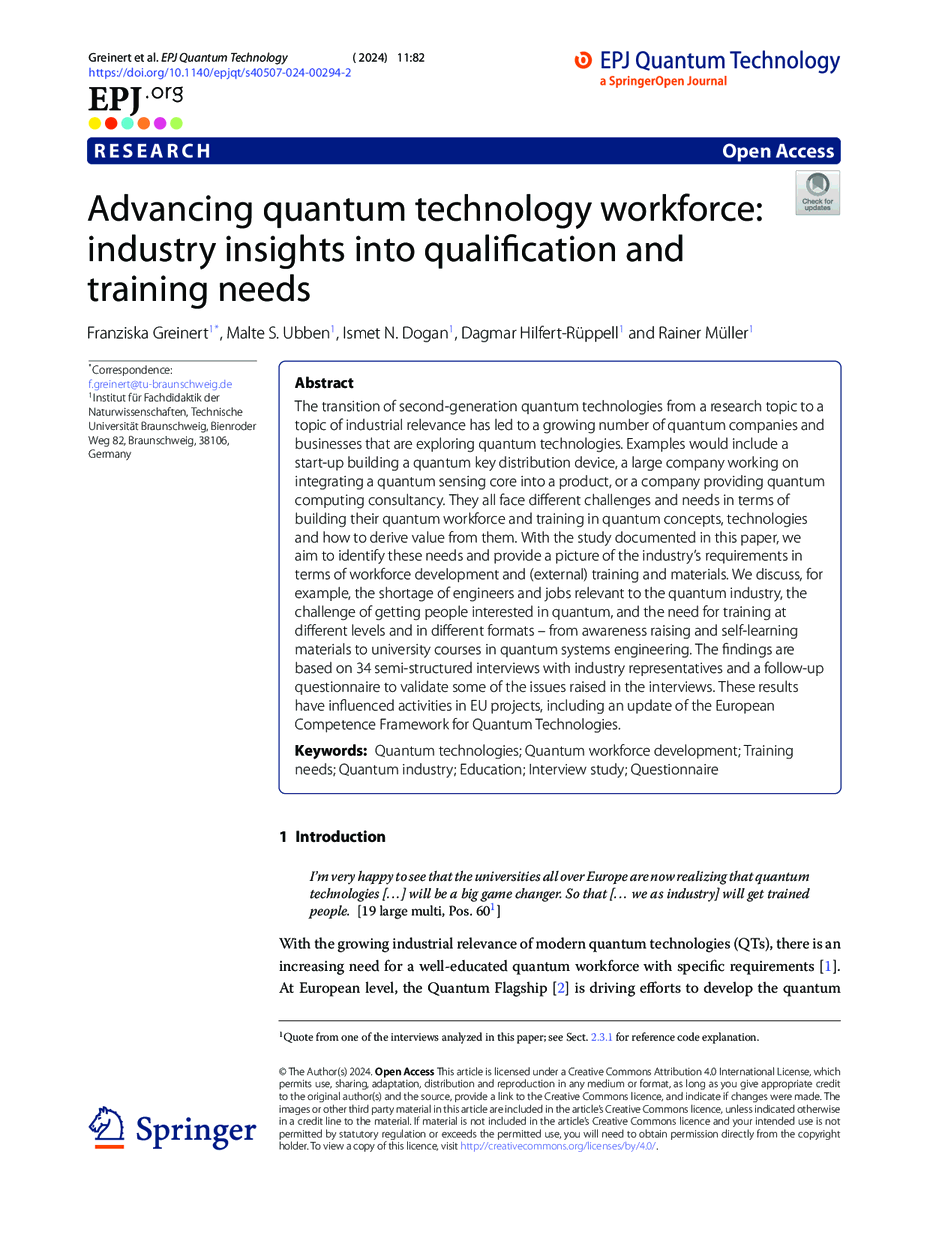https://doi.org/10.1140/epjqt/s40507-024-00294-2
Research
Advancing quantum technology workforce: industry insights into qualification and training needs
Institut für Fachdidaktik der Naturwissenschaften, Technische Universität Braunschweig, Bienroder Weg 82, 38106, Braunschweig, Germany
a
f.greinert@tu-braunschweig.de
Received:
31
July
2024
Accepted:
2
December
2024
Published online:
10
December
2024
The transition of second-generation quantum technologies from a research topic to a topic of industrial relevance has led to a growing number of quantum companies and businesses that are exploring quantum technologies. Examples would include a start-up building a quantum key distribution device, a large company working on integrating a quantum sensing core into a product, or a company providing quantum computing consultancy. They all face different challenges and needs in terms of building their quantum workforce and training in quantum concepts, technologies and how to derive value from them. With the study documented in this paper, we aim to identify these needs and provide a picture of the industry’s requirements in terms of workforce development and (external) training and materials. We discuss, for example, the shortage of engineers and jobs relevant to the quantum industry, the challenge of getting people interested in quantum, and the need for training at different levels and in different formats – from awareness raising and self-learning materials to university courses in quantum systems engineering. The findings are based on 34 semi-structured interviews with industry representatives and a follow-up questionnaire to validate some of the issues raised in the interviews. These results have influenced activities in EU projects, including an update of the European Competence Framework for Quantum Technologies.
Key words: Quantum technologies / Quantum workforce development / Training needs / Quantum industry / Education / Interview study / Questionnaire
© The Author(s) 2024
 Open Access This article is licensed under a Creative Commons Attribution 4.0 International License, which permits use, sharing, adaptation, distribution and reproduction in any medium or format, as long as you give appropriate credit to the original author(s) and the source, provide a link to the Creative Commons licence, and indicate if changes were made. The images or other third party material in this article are included in the article’s Creative Commons licence, unless indicated otherwise in a credit line to the material. If material is not included in the article’s Creative Commons licence and your intended use is not permitted by statutory regulation or exceeds the permitted use, you will need to obtain permission directly from the copyright holder. To view a copy of this licence, visit http://creativecommons.org/licenses/by/4.0/.
Open Access This article is licensed under a Creative Commons Attribution 4.0 International License, which permits use, sharing, adaptation, distribution and reproduction in any medium or format, as long as you give appropriate credit to the original author(s) and the source, provide a link to the Creative Commons licence, and indicate if changes were made. The images or other third party material in this article are included in the article’s Creative Commons licence, unless indicated otherwise in a credit line to the material. If material is not included in the article’s Creative Commons licence and your intended use is not permitted by statutory regulation or exceeds the permitted use, you will need to obtain permission directly from the copyright holder. To view a copy of this licence, visit http://creativecommons.org/licenses/by/4.0/.





